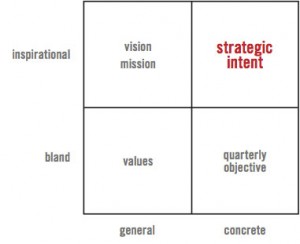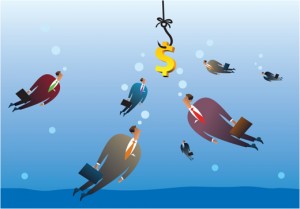COPYLEFT is a play on the word COPYRIGHT. It describes the use of copyright laws to offer the rights to reproduce, possibly adapt, and distribute copies or modified versions of a work. All modified and extended versions of the work have to be free (=libre) as well. This is why it is different from a mere uncopyrighted work belonging to the public domain where one uncooperative person can convert a version of the original work into a proprietary product. Finally, copyleft is a general concept that requires in its application the development of specific licenses adapted to the work.
The reason why I wish to  address the concept of copyleft in this blog is because I personally strongly believe in the strengths of this idea. Even if it was initiated in the 1970s and well exploited in the domain of computer software; there is still a lot to do to unleash its full potential in the Business World. The beauty of copyleft is that the product copylefted can be accessible to anyone in a way that allows them to develop it, improve it and adapt it. It enhances freedom and creativity, community and sharing, collectively aiming at a better outcome. Cooperators are given the cake AND the recipe. I wish to conclude this blog with the dream that good ideas could finally benefit and be developed by everyone. I started my blog with Emmanuel Faber and Grameen Danone Foods Ltd. so I shall end with him as well: during his lecture he actually shared with us his enthusiasm regarding COPYLEFT. The models of factories Danone took time to develop for its social enterprises in Bangladesh and elsewhere are actually copylefted to foster the expansion of such projects and with it the improvement of humanity’s living conditions.
address the concept of copyleft in this blog is because I personally strongly believe in the strengths of this idea. Even if it was initiated in the 1970s and well exploited in the domain of computer software; there is still a lot to do to unleash its full potential in the Business World. The beauty of copyleft is that the product copylefted can be accessible to anyone in a way that allows them to develop it, improve it and adapt it. It enhances freedom and creativity, community and sharing, collectively aiming at a better outcome. Cooperators are given the cake AND the recipe. I wish to conclude this blog with the dream that good ideas could finally benefit and be developed by everyone. I started my blog with Emmanuel Faber and Grameen Danone Foods Ltd. so I shall end with him as well: during his lecture he actually shared with us his enthusiasm regarding COPYLEFT. The models of factories Danone took time to develop for its social enterprises in Bangladesh and elsewhere are actually copylefted to foster the expansion of such projects and with it the improvement of humanity’s living conditions.
Yours, V.
Sources:
–http://en.wikipedia.org/wiki/Copyleft









